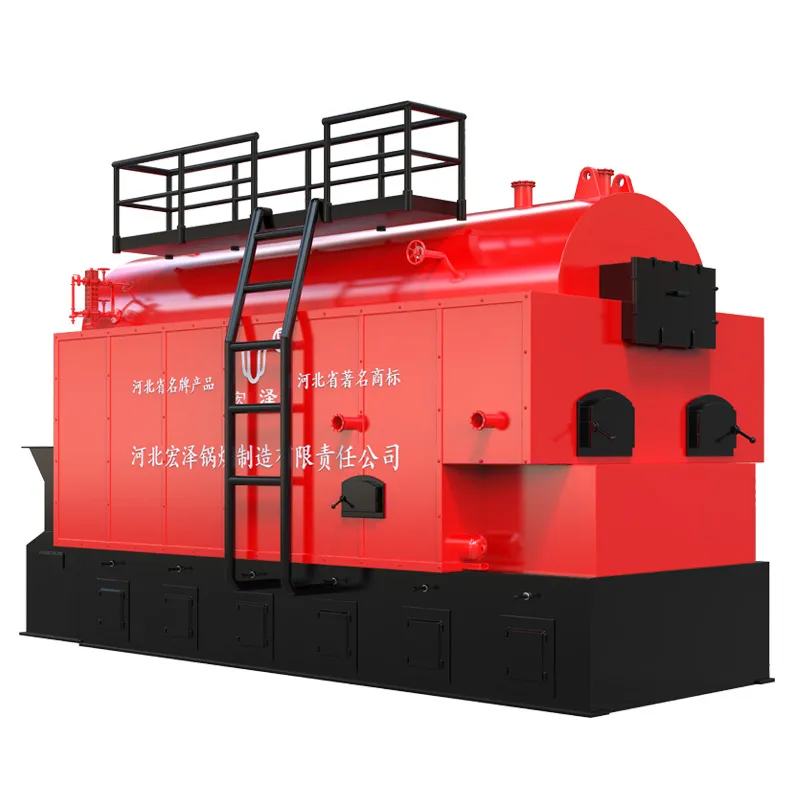
Feb . 18, 2025 01:53 Back to list
Biomass fired steam boiler
Navigating the intricate world of steam boiler systems can be challenging, yet gratifying, especially when you unravel the complexities of a schematic diagram. A steam boiler system schematic diagram is not merely a collection of lines and symbols. It's the blueprint that offers profound insights into the functionality and efficacy of the steam boiler system.
4. Steam Distribution System Post-generation, steam is directed through a complex network to the point of use. The schematic illustrates this network, including pipes, steam traps, regulators, and safety valves, which are instrumental in maintaining pressure and temperature throughout the distribution process. Knowledgeable handling of this section ensures minimal heat loss and pressure drop, optimizing the system's overall energy efficiency. Real-world experience in handling steam boiler systems elevates one's understanding of these diagrams beyond theoretical knowledge. Those with hands-on experience can share insights into troubleshooting common issues like pressure imbalances or inefficient fuel usage, contributing to the evolution of operational practices. Moreover, by documenting these experiences and continually updating schematic diagrams, they ensure the system's safety and performance adhere to the latest industry standards. Authority in this field arises from a deep understanding of thermodynamics and mechanical systems. Being familiar with compliance and safety protocols, such as those set by the American Society of Mechanical Engineers (ASME) or the National Board Inspection Code (NBIC), enhances the trustworthiness of the designs and processes depicted within these diagrams. Trust is built upon transparent sharing of knowledge and a commitment to continuous improvement. By engaging with case studies, collaborating with industry experts, and staying updated on technological advances, one can ensure that steam boiler systems are not only efficient but also safe and reliable. In conclusion, a steam boiler system schematic diagram is a powerful tool that embodies the synergy between engineering principles and practical experience. For industry professionals and newcomers alike, mastering this diagram enhances operational efficiency and ensures safety, forming the backbone of successful steam boiler management.


4. Steam Distribution System Post-generation, steam is directed through a complex network to the point of use. The schematic illustrates this network, including pipes, steam traps, regulators, and safety valves, which are instrumental in maintaining pressure and temperature throughout the distribution process. Knowledgeable handling of this section ensures minimal heat loss and pressure drop, optimizing the system's overall energy efficiency. Real-world experience in handling steam boiler systems elevates one's understanding of these diagrams beyond theoretical knowledge. Those with hands-on experience can share insights into troubleshooting common issues like pressure imbalances or inefficient fuel usage, contributing to the evolution of operational practices. Moreover, by documenting these experiences and continually updating schematic diagrams, they ensure the system's safety and performance adhere to the latest industry standards. Authority in this field arises from a deep understanding of thermodynamics and mechanical systems. Being familiar with compliance and safety protocols, such as those set by the American Society of Mechanical Engineers (ASME) or the National Board Inspection Code (NBIC), enhances the trustworthiness of the designs and processes depicted within these diagrams. Trust is built upon transparent sharing of knowledge and a commitment to continuous improvement. By engaging with case studies, collaborating with industry experts, and staying updated on technological advances, one can ensure that steam boiler systems are not only efficient but also safe and reliable. In conclusion, a steam boiler system schematic diagram is a powerful tool that embodies the synergy between engineering principles and practical experience. For industry professionals and newcomers alike, mastering this diagram enhances operational efficiency and ensures safety, forming the backbone of successful steam boiler management.
Share
Latest News
-
Commercial Oil Fired Steam Boilers with GPT-4 Turbo AI
NewsAug.04,2025
-
Coal Fired Thermal Oil Boiler with GPT-4 Turbo Efficiency
NewsAug.03,2025
-
Commercial Steam Boilers for Sale - AI Optimized Efficiency
NewsAug.02,2025
-
Efficient Biomass Fired Hot Water Boiler | AI Heating Solution
NewsAug.01,2025
-
High-Efficiency Gas Thermal Oil Boilers | HPT Models
NewsJul.31,2025
-
Oil Fired Hot Water Boilers Sale - High Efficiency & Affordable
NewsJul.31,2025
Related PRODUCTS
Copyright © 2025 HEBEI HONGZE BOILER MANUFACTURING CO., LTD. All Rights Reserved. Sitemap | Privacy Policy






















